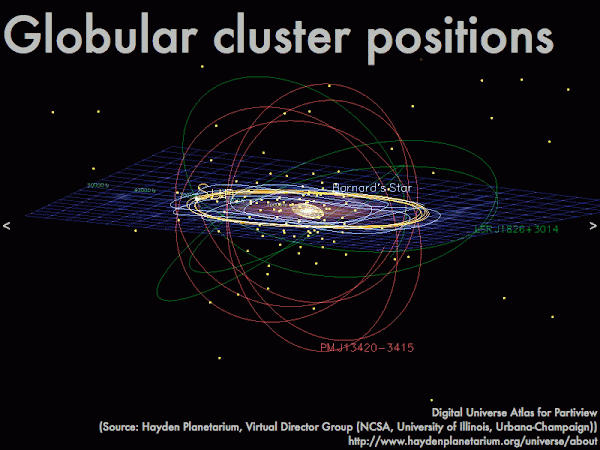Cuesta College, San Luis Obispo, CA
Students have a weekly online reading assignment (hosted by SurveyMonkey.com), where they answer questions based on reading their textbook, material covered in previous lectures, opinion questions, and/or asking (anonymous) questions or making (anonymous) comments. Full credit is given for completing the online reading assignment before next week's lecture, regardless if whether their answers are correct/incorrect. Selected results/questions/comments are addressed by the instructor at the start of the following lecture.
The following questions were asked on reading textbook chapters and previewing presentations on radioactive decay rates.

Selected/edited responses are given below.
Describe what you understand from the assigned textbook reading or presentation preview. Your description (2-3 sentences) should specifically demonstrate your level of understanding.
"What equations to use to determine radioactive decay, and what half-life is and how it could be use to find the 'age' of a material."
"How the nucleus of certain elements is unstable and cannot hold together. The idea that this happens at a half-life rate is an idea that I am familiar with. That is about it, I want to know more."
"The older the sample, the more daughter atoms it has. Releasing the daughter atoms when the sample is melted is how you determine the age of the material."
"We are finding the probability of decay over time. The decay of nuclei are indepenant of one another. If we use a short time then we can assume that N (nuclei) is constant. Rate decays also do so exponentially."
"From taking a lot of biology classes and pre calculus I have already been 'exposed' to radioactive decay and have worked out different problems relating to radioactive decay before. I also already understand the idea of it tho the equations seem a bit different compared to how I have solved for decay before."
"I havent gotten to the reading just yet."
"M&Ms® make friends."
Describe what you found confusing from the assigned textbook reading or presentation preview. Your description (2-3 sentences) should specifically identify the concept(s) that you do not understand.
"I did not find anything particularly confusing."
"I need to read this more throughly in order to understand this section."
"The whole melting reset thing."
"I do not understand the clock diagram included in the blog presentation. I'm confused as to what happens when the number of daughter atoms dwindles in relation to the clock example."
"How are daughter atoms trapped as gas inside the sample instead of released into the air?"
"Nothing seems too confusing about this chapter. I didn't know about the reseting the solidification age and why it worked but now I do so that was pretty cool."
"I found some of the equations for activity confusing. If you could go over exactly how to use those equations in class it would be helpful."
"I haven't gotten to the reading just yet."
"I think I have it just fine."
State the SI units for activity (radioactive decays per time).
"Decays/s."
"τ."
"Bq = 1 decay/second."
"Curie (Ci)."
"Didn't read yet."
For a radioactive decay process, the time constant τ ("average lifetime") is __________ half-life T1/2.
less than. ******* [7] equal to. ************ [12] greater than. ****************** [18] (Unsure/guessing/lost/help!) **** [4]
Two samples are each comprised of 800 unstable atoms that will undergo radioactive decay. The remainder of one sample is 200 inert, stable atoms not involved in a radioactive decay process. The remainder of the other sample is 200 daughter atoms of the radioactive decay process.
(Only correct responses shown.)
Sample with more activity (decays/time): (there is a tie). [15%]
Sample with older solidification age: adioactive sample with daughter atoms. [28%]

"The gaseous daughter atoms are released while the radioactive atoms are left in the sample."
"I am unsure."
"All the radioactive daughter atoms are released when the substance is melted. Once it solidifies, the substance starts out again with no daughter atoms."
"Its structure."
"The radioactive atoms change into a gaseous form."
"you date things by measuring the gases trapped in a melted. If it is melted then all the gas will escape and leave the melting, reseting it to just non decayed atoms."
"We are concerned with daughter atom counts. A resolidified material has no daughter atoms and is thus considered 'reset' in terms of radioactive dating."
"When a sample is melted all the daughter cells that are trapped in the sample in gaseous form are released and the age of the sample can be determined by the material that is left. The sample is reset without any daughter cells in the sample and sort of resets the age of the sample due to the lack of daughter cells."
Ask the instructor an anonymous question, or make a comment. Selected questions/comments may be discussed in class.
"Can you explain the concept of solidification?"
"I would not have guessed that radioactivity involves physics." (Damn straight it does.)
"I'm not sure if I really believe in the accuracy of carbon dating, seeing that decay is really a random event." (Yes, on an individual atom-by-atom basis, the event of a decay is randomized, but with a large enough statistical ensemble, the decays that occur match up well with the expected probability.)
"Trying to finish this semester strong and stay motivated in physics." (#livestrong #finishstrong)






























